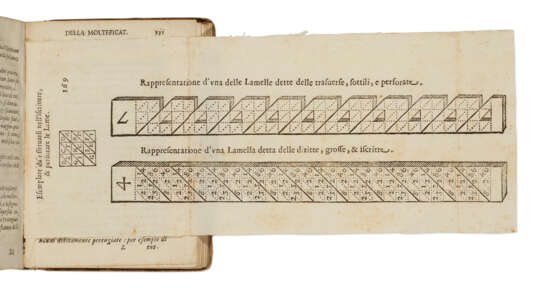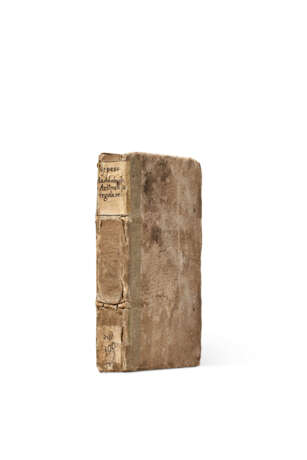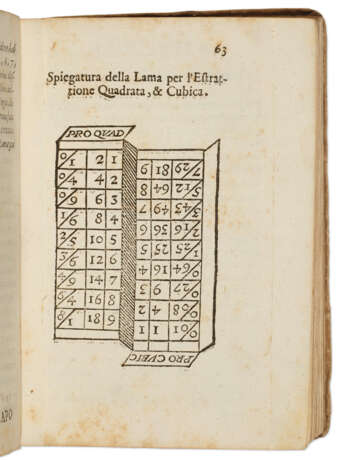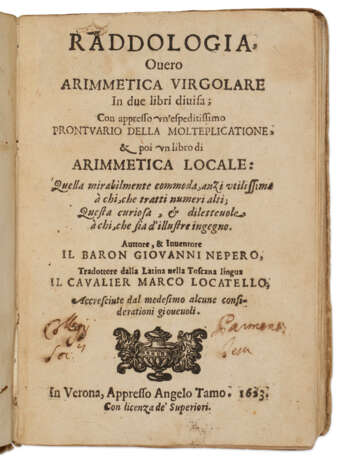ID 887835
Lot 62 | Raddologia
Estimate value
$ 2 400 – 3 000
First Italian edition of Napier’s Rabdologiae, one of the earliest books on the use of mechanical devices in mathematical calculation, in contemporary boards. The Scottish mathematician Napier, also known as "The Marvellous Merchiston," was the inventor of logarithms and also devised a number of devices for simplifying the multiplication and division of large numbers. The most famous of these are Napier’s bones, "which in essence constitute a mechanical multiplication table [and] had a considerable vogue for many years after his death. Each rod is engraved with a table of multiples of a particular digit, the tens and units being separated by an oblique stroke ... Book II [of the Rabdologiae] is a practical treatment of mensuration formulas. Book III, the method of the promptuary, deals with a more complicated system of multiplication by engraved rods and strips, which has been called the first attempt at the invention of a calculating machine. The concluding section deals with a mechanical method of multiplication that was based on an 'areal abacus' consisting of a checkerboard with counters, in which numbers were expressed in the binary scale" (DSB). This translation includes a commmentary by Locatello and new illustrations. Riccardi I.2 44 (under Locatello). See Dibner 107 and Norman 1574 for the first edition.
Octavo (155 x 108mm). 7 woodcut tables and diagrams inserted, 6 of which folding; illustrations and diagrams in text, printer's device on final leaf, ornaments and initials (minor repair on dedication leaf, a few waterstains, a few small holes in title). Contemporary boards with paper spine label, faded ink title on upper board (worn, spine partially perished). Custom box. Provenance: Jesuit College of Parma (inscription on title) – two eighteenth-century owners’ inscriptions on front free endpaper – Charles W. Turner (donated in 1968 to:) – University of Keele Lbrary (Turner Collection bookplate; collection deaccessed via the trade in 1998).
| Address of auction |
CHRISTIE'S 8 King Street, St. James's SW1Y 6QT London United Kingdom | |
|---|---|---|
| Preview |
| |
| Phone | +44 (0)20 7839 9060 | |
| Buyer Premium | see on Website | |
| Conditions of purchase | Conditions of purchase |






